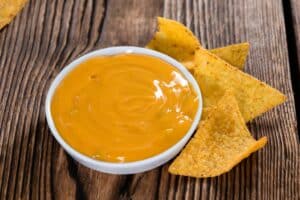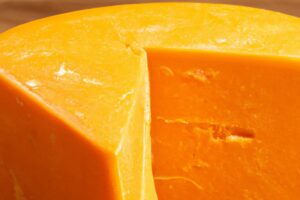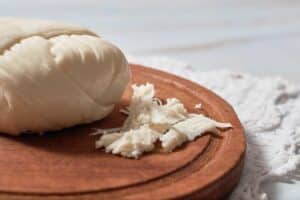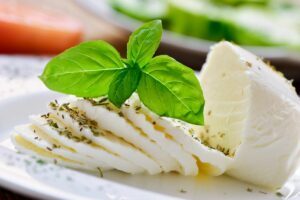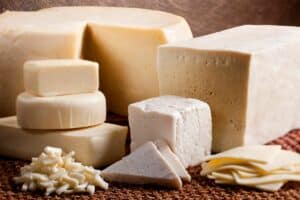Raclette cheese is a young, soft cheese made with milk from Alpine cows with a specific diet. Fed sweet, fresh grass in the summer and supplemented with hay in the winter, this combination offers a nutty, mild flavor.
Traditionally Swiss farmers would heat the raclette cheese over an open fire and then pour the bubbling cheese over meat, bread, and vegetables.
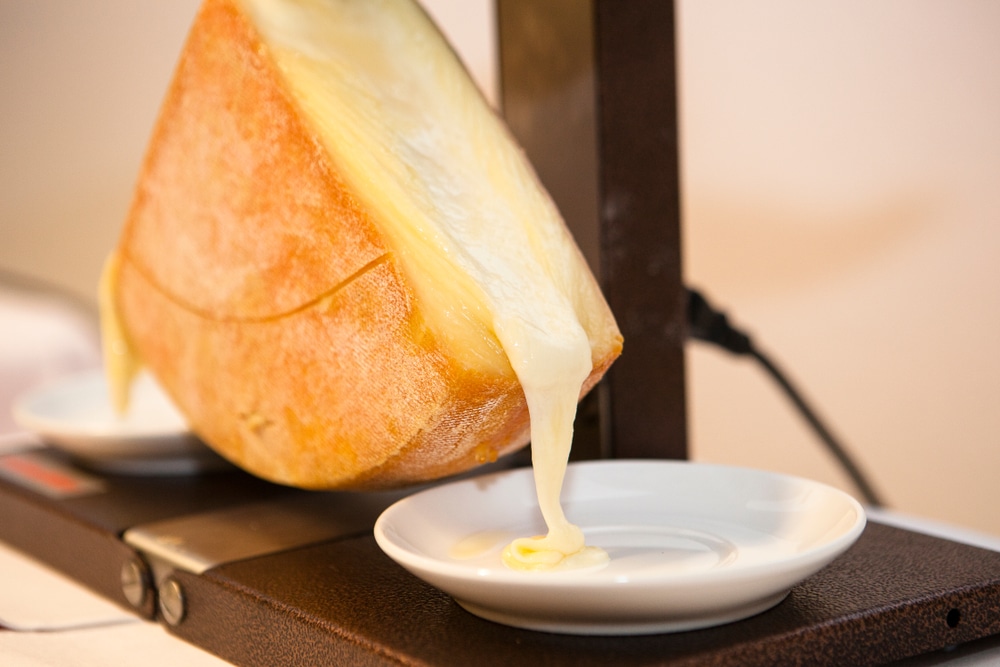
Because this cheese is very region-specific, you may have difficulty finding it at your local grocery store. To find a raclette cheese substitute, you want a cheese that melts well and has a mild flavor.
Five great cheese substitutions include Gruyere, Appenzeller, Emmental, fontina, and asiago.
5 Recommended Raclette Cheese Substitute
The 5 most common cheese like raclette:
- Gruyere
- Appenzeller
- Emmenthal
- Fontina
- Asiago
Gruyere
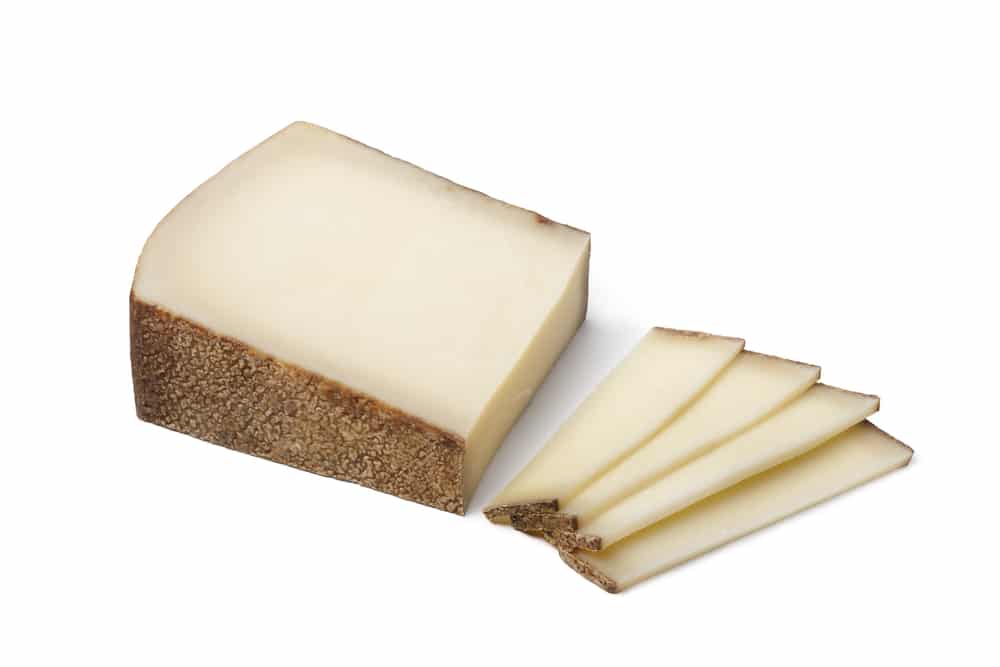
The first Raclette cheese substitute is gruyere. Another Swiss cheese, gruyere, has a similar nutty taste and smooth texture. Gruyere is more widely available than raclette and produced in the Alpine region of Switzerland. First made in the Switzerland area with the same name, the recipe for traditional gruyere cheese dates back to 1115. This heritage cheese is prized by the Swiss and foreigners alike!
Gruyere is made from raw milk, meaning the milk is not heated before curdling, which is one of the aspects of the cheesemaking process that ensures unique aromas.
When searching for a close raclette cheese alternative, opt for a young gruyere. Your best choice is selecting a wheel aged six to nine months. The flavor intensifies with age, capping out at about 24 months.
Are you wondering what to prepare with gruyere? Consider this simple and satisfying recipe, featuring melted gruyere over hot potatoes, topped with sizzling bacon. Another option is fondue. Potentially the most popular pick for fondue, gruyere has great melting properties.
When gruyere is heated up and melted, it becomes stringy. This is because it has higher levels of acid than other cheeses. It will stretch over food, leaving luscious tendrils behind as you take a bite. If you want to hold a raclette party but can’t find raclette, gruyere is possibly your best substitute.
Appenzeller
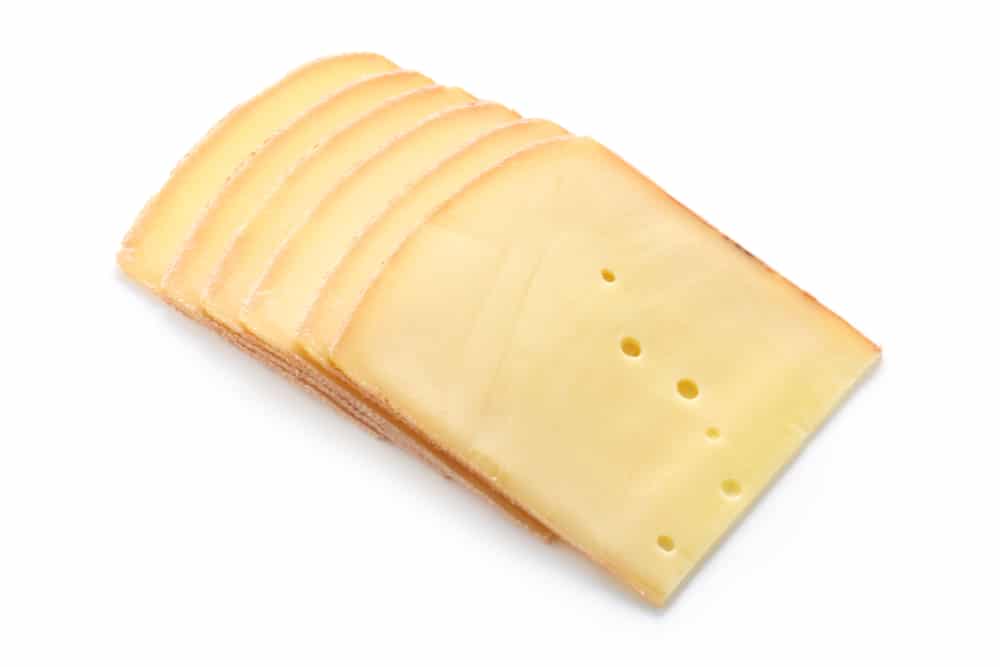
Appenzeller, is a great candidate for a substitute for raclette cheese. This strong-smelling cheese has a mild, nutty, and fruity flavor similar to raclette.
This cheese is unique because it is aged with herbal brine and has been in production for at least 700 years with the same recipe. As the cheese ages, the cheesemakers rub the brine onto the skin by hand, giving it just a bit of bite.
Like many of these heritage cheeses, appenzeller cheese has a controlled label. Cheesemakers must make Appenzeller the traditional way in the Appenzeller region for it to be labeled Appenzeller.
Similar to using gruyere cheese as a substitute, you will want to select a young appenzeller variety. As the appenzeller ages, the spice increases, and the flavor intensifies, making it too tangy for a proper raclette substitute.
Not sure how to choose the right age? A helpful hint is to look at the color of the wrapper. A silver label indicates a young, “classic” appenzeller, aged three to four months.
For an intermediate or “surchoix” appenzeller, choose the gold label that indicates an age of four to six months. “Extra” Appenzeller is aged six months or longer and has a black label.
When you go to the shop, you may see appenzeller labels in all kinds of colors. The brown label, for example, is a lower-fat variety that has a more intense flavor. However, for melting, you’ll want to choose something that has full fat.
Appenzeller is a popular choice for fondue. Its creamy texture, nutty flavor, and subtly spicy flavor make for the perfect accompaniment alongside bread and meat. Popular fondue recipes often combine a variety of alpine cheeses to create a hearty, robust flavor.
If you have any extra cheese from your raclette-themed party, you could use some of the appenzeller in a grilled cheese. Because it melts well and has a creamy texture, this paired with a harder cheese, like cheddar, makes for a fantastic sandwich.
Emmental
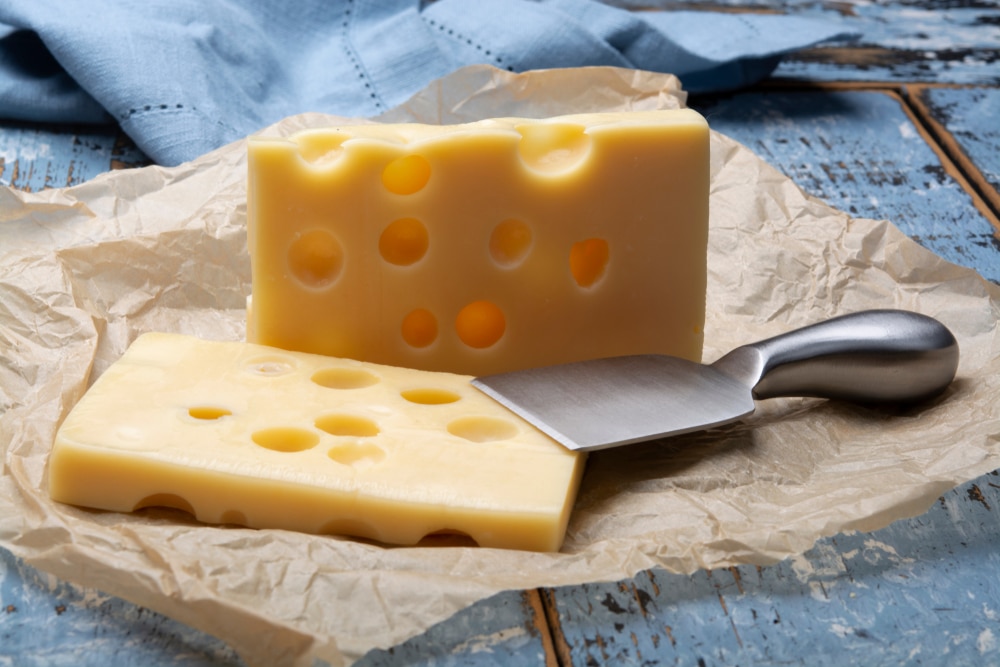
Emmenthal cheese is an excellent Raclette cheese substitute due to its similar flavors. Also hailing from Switzerland and made from the milk of alpine cows, Emmental is a yellow, medium-hard cheese typically aged 2-18 months.
It happens to be the oldest cheese that Switzerland makes, and to call a cheese a proper Emmental (or Emmenthal, Emmenthaler, or Emmentaler), it needs to be made in a specific region with raw milk from cows fed fresh grass and hay. Emmental cheese can be made into large wheels as heavy as 200 pounds.
Due to the large wheels, this cheese has been penned “the king of cheese.” Why does it come in such large wheels? During the 19th century, cheesemakers only had to pay export duties per wheel, no matter the weight, so they made them as large as they possibly could.
When cheese shopping, you’ll notice Emmental has one feature that distinguishes it from raclette, gruyere, and Appenzeller. Eyes. Yes, those holes that help Americans signify swiss cheese are referred to as eyes.
Historically, cheesemakers tried to avoid eyes from forming. However, they are no longer a sign of imperfection but rather quality. They appear when the cheese is fermenting before the aging process.
Traditionally served cold in sliced form, this cheese also has very good melting properties. It is a common ingredient in fondue and is used in soufflés, pasta, and casseroles. When enjoying this souffle, your palette will be treated to the sweet, nutty flavor Emmenthal cheese is famous for.
Because it melts so well and is mild in taste, it makes for a perfect raclette substitute. However, like the other cheeses on this list, the older a variety is, the stronger the flavor it will have.
So, to get a truly authentic raclette dupe, a young Emmenthal is best.
See our list of best emmental substitutes.
Fontina
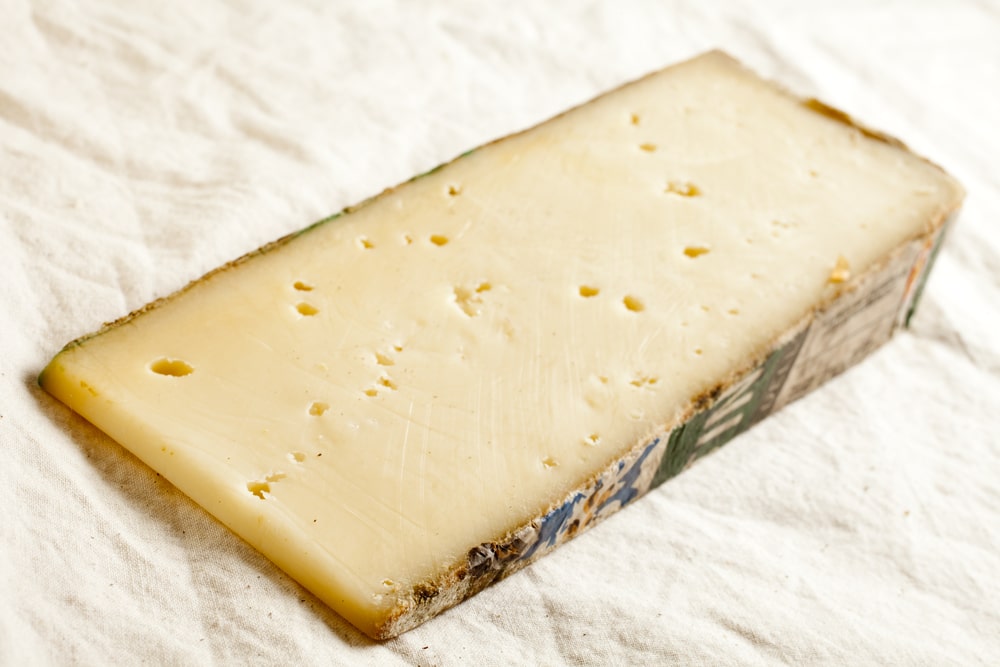
This cheese was also born in the alps, just on the Italian side. First produced in Italy, fontina cheese is now widely produced all over the world, making it very easy to find locally.It is a semi-soft cow’s cheese with a gentle, mild flavor.
With melting properties similar to raclette, this cheese is known as being very versatile in culinary applications. Because of its slight buttery flavor, it is a popular choice and a crowd-pleaser. Where does it get its flavor? Some say the flavor originates in the caverns fontina is traditionally aged in.
This cheese is known to exhibit eyes occasionally. Eyes in cheese develop when bacteria that’s necessary to the formation of cheese release carbon dioxide bubbles.
Here’s a tip! Unlike some other cheeses such as brie, the rind on this cheese is typically not edible. Be sure to remove before melting the cheese! The rind can also tell you where the cheese is from. For example, Swedish varieties come with a firm red wax as a coating rather than a traditional rind.
Want a “real” cheese from one of the official designated regions? Look for a Fontina with the Matterhorn on the label. That means it’s the real deal.
Also, if you want a nice, soft cheese, get a younger Fontina. The longer it’s been aged, the firmer it will be.
Asiago
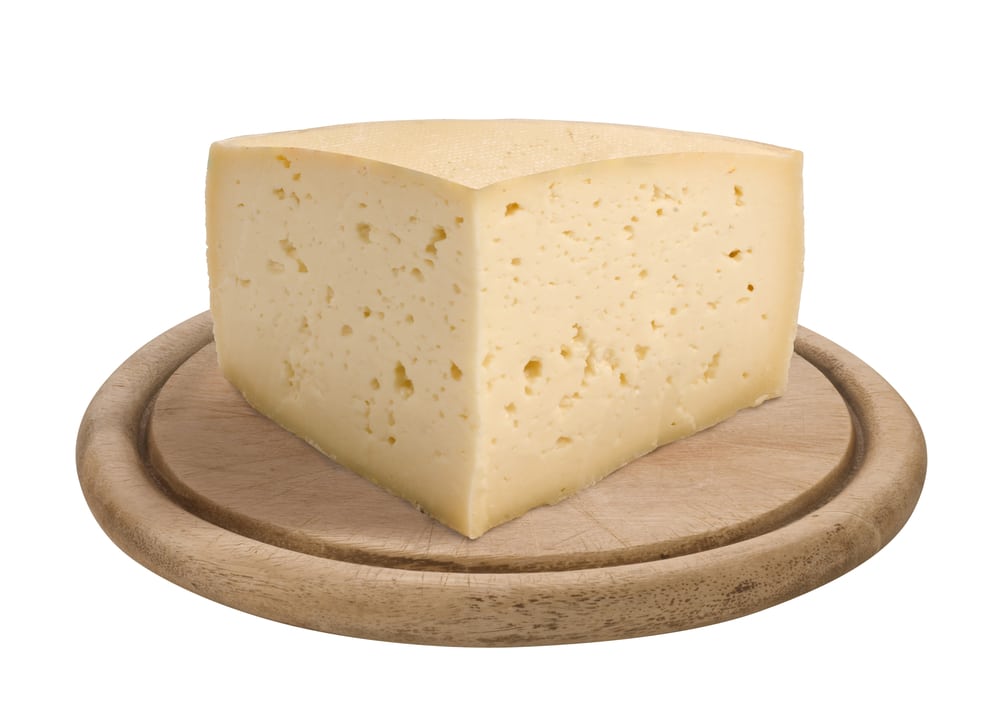
Another Italian cheese takes the last spot on our raclette substitution list. This hard Italian cheese is creamier than its close cousin, parmesan. Like every recommendation on this list, asiago cheese was originally produced in the alpine area and is made from cow’s milk.
Asiago, coupled with gruyere, may be the most recognized cheese on this list and probably the most widely available. Asiago is often baked into bread or crackers and grated over pasta in the states. It has a tangy, almost sour flavor to it, much like a cheese made from goat’s milk.
How do you know if you’re getting quality? Look for the region of production. Asiago cheese is only considered authentic if produced in the Asiago Plateau in Italy. This includes both Trentino and Veneto!
Earning the nickname “product of the mountains,” authentic asiago cheese originates only from farms that are 2000 feet above sea level or higher.
Opt for a young Asiago when searching for a raclette substitution. Young Asiago cheese is referred to as Presatto and is made from whole cow’s milk, rather than the mix of whole and skim milk found in aged varieties. Because it has such a distinct and tangy taste, you may want to mix asiago with a milder, creamier cheese.
While aged asiago is great for grating over pasta, it is crumbly and dry. Aged Asiago is referred to as Asiago d’allevo and includes Vecchio, aged 9-18 months, and Mezzano, aged three to eight months.
Young asiago is firmer and contains more moisture, making it ideal for melting. Try asiago in a melted down dip form with artichoke hearts and sundried tomatoes.

